KANCHANABURI and the RIVER KWAI
TUESDAY 8th SEPTEMBER (continued):
The Bure Homestay ('Bure' pronounced 'burry') was the name of our hotel. It was more a very small apartment block than a hotel and was clearly very new. Our host, Chi, was out to greet us as soon as the mini-bus drew-up. An extremely pleasant and helpful guy who did his best to settle us in swiftly.
Our room was average sized, sparsely furnitured but spotlessly clean. It wasn't en-suite but it was clear we were the only guests in the place. Room was air-conditioned with a balcony which wasn't to be much use as it's way too hot outside.
It was now a case of dumping the luggage, picking up a couple of cameras and out for a hike into and along the main street which consisted of low-rise buildings sprinkled with a variety of small shops, restaurants and the occasional bar.
The whole atmosphere of the town oozed a laid-back friendly relaxing feeling; a far cry from the hurly-burly of Bangkok or Pattaya.
Our aim was the River Kwai about 1.5km away. The history of the famous bridge is well documented but you can take a peek by following this link.
The River Kwai here is a wide slow-moving river with some degree of commercialism and the usual tourist stuff but fairly low key.
We walked the length of the bridge and back and then went down to the water's edge to a very attractive looking floating bar/restaurant for a well-earned refreshment. Sadly, they only had Chang beer in large 620cc bottles so I had to force myself to agree to partake.
Took a few photos here and at one time a train trundled across and over the bridge shooing people out of its way who were strolling along the tracks. Health and Safety elsewhere would strictly forbid pedestrians anywhere near an active railway line but here in Thailand the tracks are completely open as if it were a walkway. Trains that regularly use the bridge do so very slowly as a concession to walkers and buskers too that operate at intervals on the bridge.
Got a motorbike taxi back to near to our residence and opted for a bar which looked OK. Run by an Aussie guy he was very welcoming which encouraged us to remain a while. After 4 or so rounds we popped over the road to a restaurant for a bite to eat. Good food! Back to the apartment around 11pm.
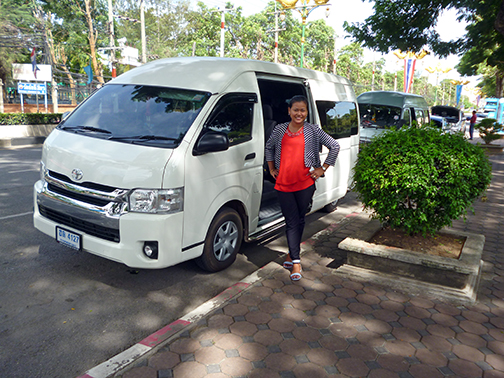
| 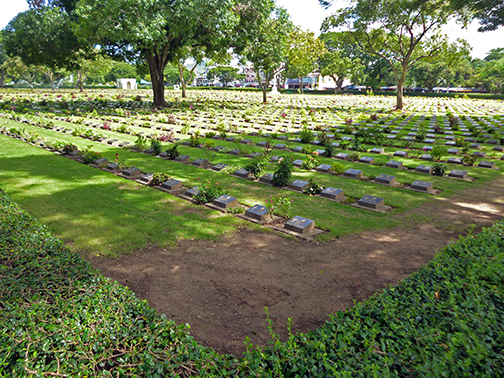 |
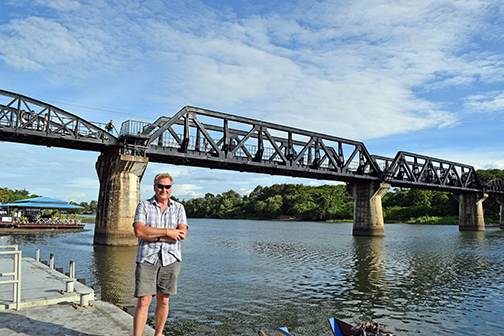
| 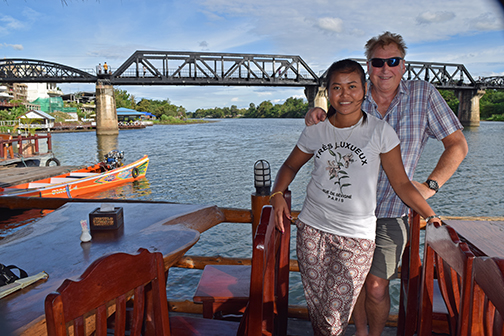 |
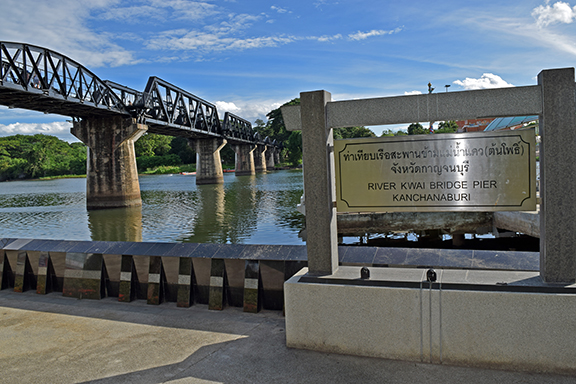
| 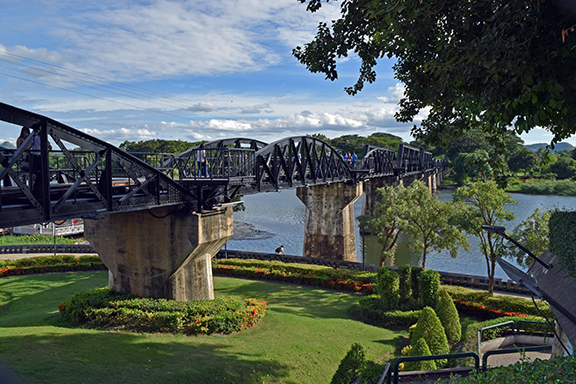 |
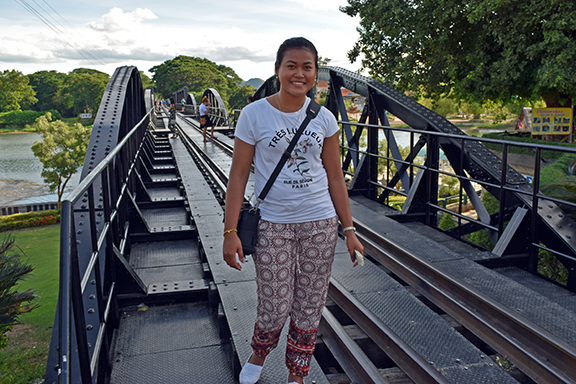
| 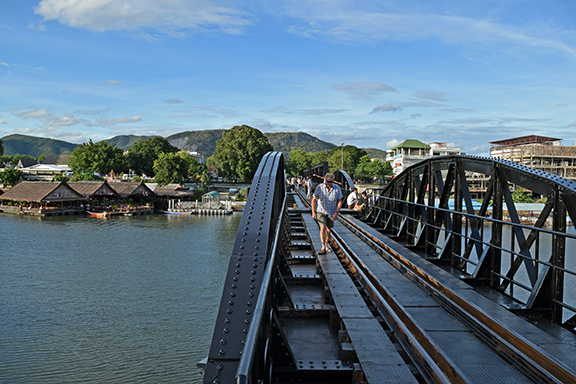 |
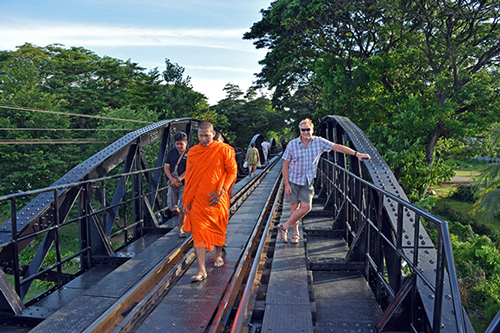
| 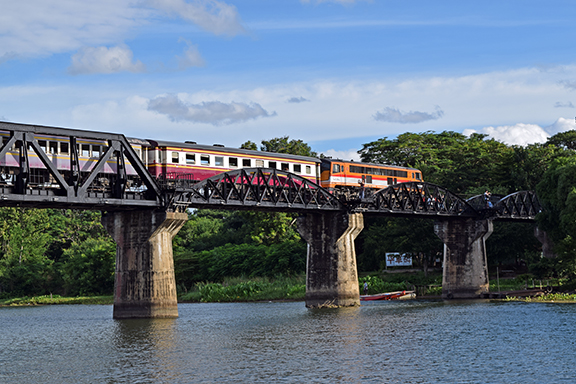 |
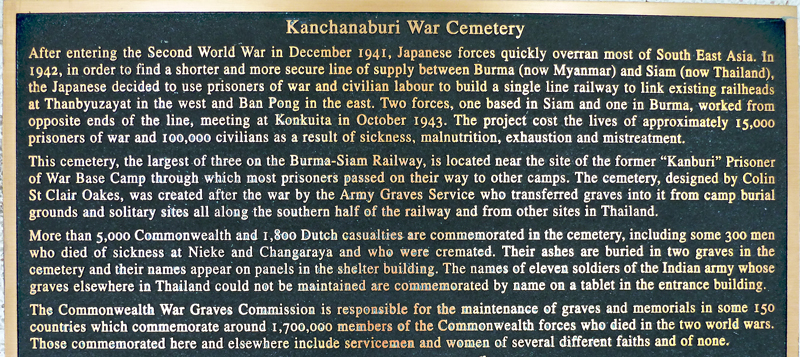
TOP LEFT: Our 'taxi' from Bangkok to Kanchanaburi.
TOP RIGHT: The Kanchanaburi War Cemetery*. More in-depth details can be found by visiting THIS site.
SECOND ROW: Posing on the banks of the Kwai River with the famous River Kwai Bridge behind. The center two spans are different because the bridge was bombed here, completely destroying this part of the bridge. The rebuilt spans were a more advanced design.
THIRD ROW: Two more shots of the bridge with the plaque in the left hand picture.
FOURTH ROW: Walking the length of the bridge. Fortunately, not many trains run across it.
FIFTH LEFT: Yours truly on the bridge with a clutch of Buddhist Monks on the move.
FIFTH RIGHT: A train traversing the bridge.
FIFTH RIGHT: Yours truly on the bridge with a clutch of Buddhist Monks on the move.
BOTTOM: Plaque in the Kanchanaburi War Cemetery says it all.
*Historical Information.
The Kanchanaburi War Cemetery is a large cemetery on 17 acres containing the bodies of prisoners who died building the railway.
The notorious Burma-Siam railway, built by Commonwealth, Dutch and American prisoners of war, was a Japanese project driven by the need for improved communications to support the large Japanese army in Burma. During its construction, approximately 13,000 prisoners of war died and were buried along the railway. An estimated 80,000 to 100,000 civilians also died in the course of the project, chiefly forced labour brought from Malaya and the Dutch East Indies, or conscripted in Siam (Thailand) and Burma (Myanmar).
Two labour forces, one based in Siam and the other in Burma worked from opposite ends of the line towards the centre. The Japanese aimed at completing the railway in 14 months and work began in October 1942. The line, 424 kilometres long, was completed by December 1943.
WEDNESDAY 9th: Up at 08:00ish and a brief DIY breakfast (all laid-on downstairs FOC).
The apartment we have feels more like our own little house as we have the place to ourselves and can go downstairs to the mini kitchen area and eat & drink at our leisure.
Anyway, whilst we were breakfasting the owner, Chi, chatted away to us and asked us what our plans for the day were. I said we were thinking of taking the train to Saiyoknoi from Kachanaburi station. He immediately offered us a lift in his car to the station. So a quick sorting out and we were on our way.
At the station tickets were bought, but only for me as Aom, being a Thai got a free ride. Discrimination...HUH!!. But my fare was only 100Baht for the two hour trip.
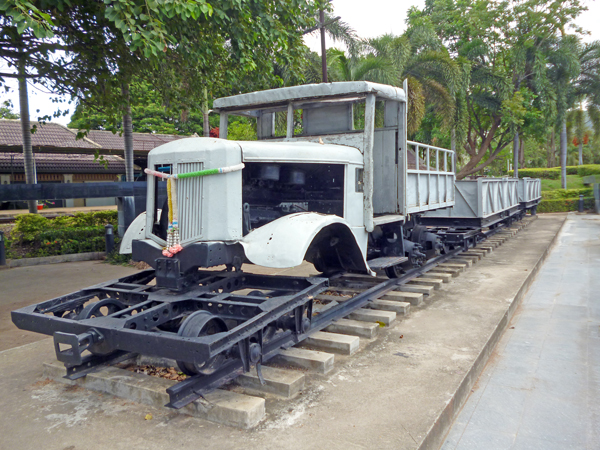
| 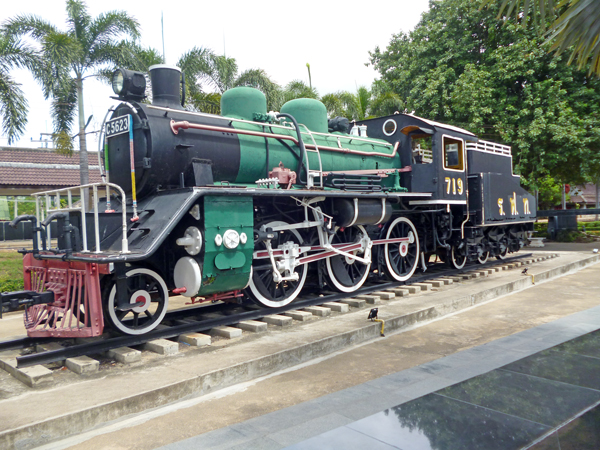 |
LEFT: A war-time "locomotive" used by the Japanese before steam engines were introduced. Basically, a truck which was adapted on bogie-wheels. They were often disguised with bamboo huts over them to avoid attack from the air. The POW's called these "The Flying Kampons".
RIGHT: An example of the early steam locomotives used on the "Death Railway".
Next > or Go To Page: 1 - 3 4 5 6 7 8 9 10 11 12 13















